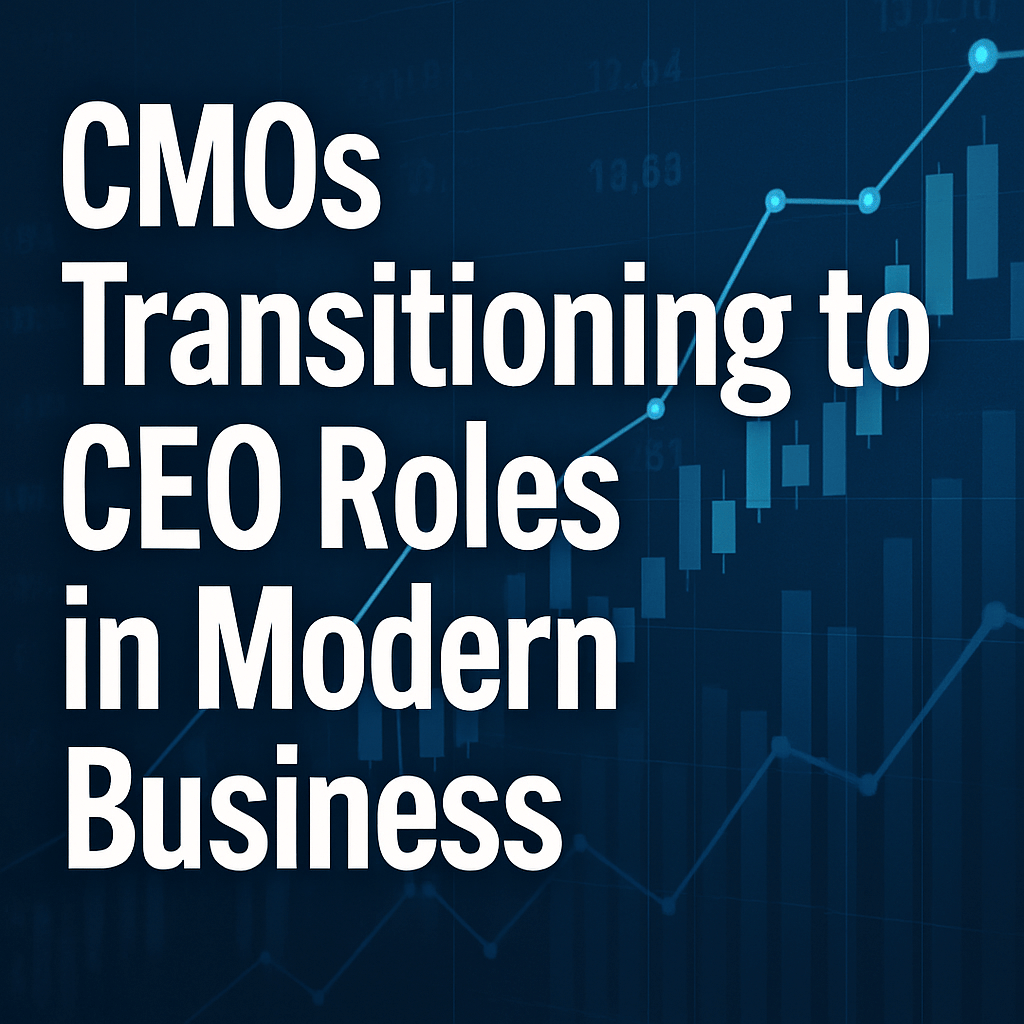CMOs Transitioning to CEO Roles in Modern Business

The traditional trajectory to the CEO seat has predominantly cycled through finance, operations, or legal departments. However, as consumer behavior undergoes significant transformation, digital disruption accelerates, and brand trust emerges as a critical strategic directive, a new player appears on the horizon: the Chief Marketing Officer (CMO).
The Shift to Marketing-Centric Leadership
Despite the rarity of CMOs ascending to the CEO position—currently, only about 10% of Fortune 250 CEOs have marketing backgrounds, as reported by Spencer Stuart—this number is steadily rising. This trend is especially prominent in sectors such as retail, consumer technology, media, and digital-first businesses, where customer experience and sustainable growth are integral to overarching corporate strategies.
Modern CMOs have transcended their roles as mere custodians of brand image or advertising expenditures. They have evolved into pivotal figures responsible for a myriad of functions, which include growth strategy, product innovation, customer experience enhancement, digital transformation initiatives, and data analytics. Notably, the scope of these responsibilities has led to the emergence of hybrid titles such as Chief Growth Officer and Chief Customer Officer, solidifying their candidacy for top executive roles.
Success Stories of CMO-to-CEO Transitions
Real-world examples exemplifying this shift are becoming increasingly prevalent:
- Mary Dillon: Former CMO of McDonald’s, she transitioned to CEO roles at U.S. Cellular, Ulta Beauty, and currently, Foot Locker, demonstrating how marketing acumen can translate into broader corporate leadership.
- Andrea Jung: Having begun her career at Avon as CMO, she later served as CEO after a tenure as COO, which underscores the blend of marketing and operational expertise.
- Kris Dolan: Her ascent through media and marketing at AMC Networks culminated in her current role as CEO, showcasing a successful trajectory from brand management to overall corporate governance.
- Brian Niccol and Chris Kempczinski: Both individuals held senior leadership positions in marketing at Starbucks and McDonald’s, respectively, before attaining CEO roles, further highlighting the importance of marketing in corporate leadership strategies.
The distinction between running marketing campaigns and driving growth is vital, particularly in industries where the brand and product are interdependent. This recognition marks a significant shift in corporate culture.
The Skillset Advantage of Marketing Professionals
What differentiates these CMO-leaders is their robust operational credibility. Many of these individuals bear Profit and Loss (P&L) responsibilities, a common critical skill set among CEOs. Furthermore, they have also led cross-functional teams that span product development, technology, and strategic planning. Their adeptness at digital fluency, effective crisis communication, and mastery of brand narratives enhances their appeal in a fluctuating business landscape.
Barriers to CMO Advancement
Despite these advancements, obstacles remain. Certain corporate boards still perceive marketing through a tactical lens rather than as a key strategic driver. This perception partly accounts for the notably brief tenures of CMOs in the executive suite. A lack of exposure to finance or supply chain management can also pose challenges for many CMOs aspiring to become CEOs.
Emerging Trends in CMO-CEO Transitioning
The pipeline for CMOs transitioning into CEO roles is gradually expanding. According to Spencer Stuart, among the Fortune 500 CMOs who exited their positions last year, 10% ascended to CEO roles. Furthermore, 37% of current Fortune 500 CEOs possess some functional experience in marketing. This indicates that a modern marketing leader—equipped with digital fluency, a keen understanding of growth strategies, and an intrinsic focus on customer insights—is increasingly considered viable for top executive roles.
Future Implications for Leadership Structures
As companies continue to navigate the complexities of a digital-first economy, the integration of marketing insights into leadership strategy will be paramount. This evolution may lead businesses to rethink traditional pathways to the CEO role, emphasizing the importance of storytelling and customer engagement in shaping strategic visions.
Conclusion
In summary, the modern CEO is increasingly called upon to be not just a strategist but also a storyteller, one who can weave brand narratives into the operational fabric of their organizations. As the landscape continues to evolve, the redefinition of the CMO’s role signifies broader changes in corporate governance, underscoring the increasing crossover between marketing and executive leadership.
On this note, keep an eye on upcoming opportunities such as the flagship event at Cannes Lions this June, where thought leaders will gather to discuss creativity, innovation, and the future of leadership. For inquiries, please contact Naomi Cykiert at naomi.cykiert@fortune.com.